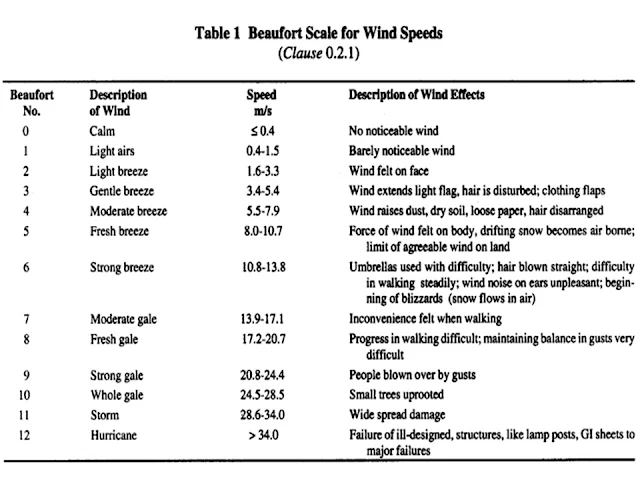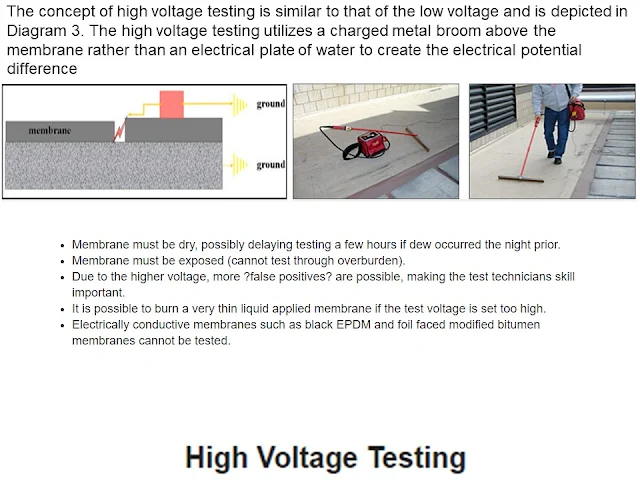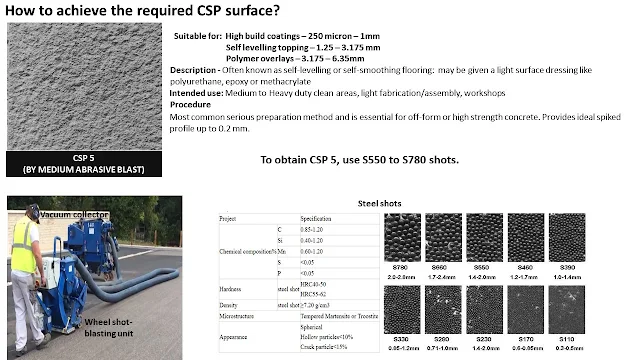If we do not know the bond strength of
the product, how can we make sure whether the product used will sustain the
load or the force. If the load or the
force acting is higher than the product bond strength, the product will fail.
If the surface bond strength is lower than the load or force acting, then also,
entire system will fail. So, while choosing the product it is necessary to know
the surface bond strength, product bond strength and also the load / force
acting. BOND STRENGTH is also called as tensile bond strength, Surface bond
strength, Pull-off adhesion strength, adhesion strength, etc.. SURFACE BOND
STRENGTH is the strength of the surface to provide the bond to the proposed
applicable material. There is no correct defined strength of the surface in any
standard except the standard BS 8204 : 6, which talks about the surface tensile
strength and other parameters requirement for installation of Synthetic resin
floorings only. BOND STRENGTH OF THE PRODUCT is the strength of the product to
bond to the surface OR to bond to the two same / different material. This bond
strength of the product will be provided by the manufacturer of the product in
accordance of some standards. Since there are so many types of surfaces like
Stone, Concrete, Cement Plaster, Gypsum Plaster, Gypsum Boards, Wood, Steel,
FRB (Fibre Reinforced Boards), Terrazzo, Vitreous / Ceramic, Glazed Ceramic
Tiles, Clay Tiles, Quarry Tiles, Mosaic, Brick, Terracotta Tiles, Pavers,
Magnesite / Oxychloride, Resin Floorings Like Epoxy, PU, PMMA, etc,. are
available, so there is no any standards saying a unique value of surface bond
strength on which again many more different types of bonding material can be
installed. If the surface is having the poor bond strength and the applicable
subsequent product has high tensile strength, then the applied product will
peels off the top matrix of the surface and if the product is applied thicker,
it peels off and cracks too. That’s the region, BS 8204: 6 talks about the
surface requirement for Synthetic resin floorings like Epoxy, Polyurethane and
Poly Methyl Methacrylate(also known as Acrylic or Acrylic Glass) as per BS
8500-2:2006 ( Page No 16, Table 6, says to use concrete of 30 N/Sqmm
compression strength, S3 – slump class, 0.55 – max W/C ratio, Min. cement or
combination content (kg/Cmtr) for max. aggregate size like ≥40mm of 280, 20mm
of 300,










14mm of 320 and 10mm of 340 Kg / Cmtr with Cement and combination types CEM I, IIA, IIB-S, IIB-V, IIIA, IVB-V. B.) Housing & Development board - Singapore - STANDARD SPECIFICATIONS FOR UPGRADING WORKS (2007 EDITION), Page No Ugdg Spec TS 20-2/14 Thicker material may give the value of cohesive strength (Inner-strength of a material) not the bond strength of material with the substrate. May produce misleading pull-off values (false, high). Scoring through material (down to the surface) and value may be of cohesive strength of surface. Test specimen may get disturbed while fixing dolly OR at the time of fixing the machine attachments and reading may vary. Force / load application in un-uniform way may vary the readings. Since all surface are not homogeneous, reading will vary and the dolly shall be larger in size. The readings may be of bond strength of surface not of the material. In general, if the surface has high compressive strength will have low surface tensile strength… readings will be very low. Readings will be of min value, but actual bond strength of material will remain unknow. Pull-off strength / bond strength data is not typically a predictor of subsequent application performance. No industry is having adhesion acceptance value. Pull-off adhesion (resistance to perpendicular pull), requires specialized equipment and value cannot comparable, since testing mechanisms are different than the site level. ASTM D4541, “Pull-off Strength of Coatings Using Portable Adhesion Testers” Annex A1: Fixed Alignment Type II (mechanical) Annex A2: Self Aligning Type III (hydraulic) Annex A3: Self Aligning Type IV (pneumatic) Annex A4: Self Aligning Type V( hydraulic) Annex A5: Self Aligning Type VI (hydraulic) Different testers may yield different pull-off values





























































